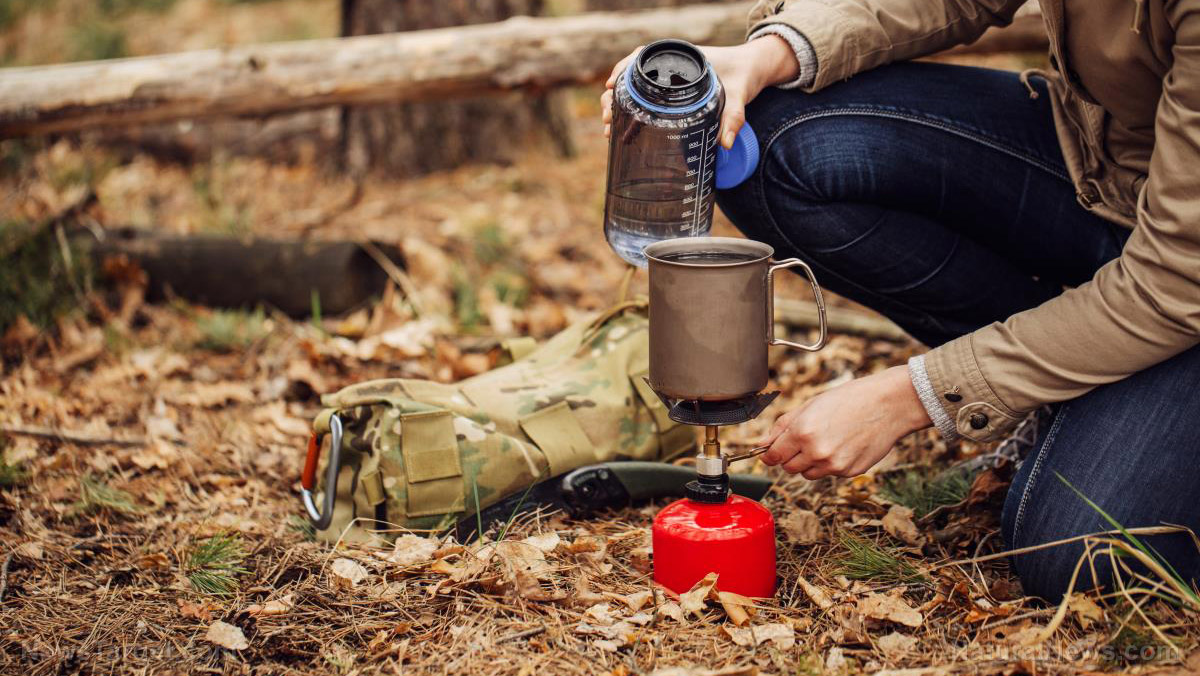
Survival skills are techniques to ensure that your personal safety and basic needs such as food, water, and shelter, are met. They are not commonly taught but can save your life during disasters. Here are five skills that every prepper must possess, especially when bugging out. (h/t to ApartmentPrepper.com)
Getting clean water
When bugging out, you quickly become dehydrated because your body loses water through breathing, sweating, and digestion. Being dehydrated for an extended period will lead to rapid heartbeat, sleepiness, dizziness, and fainting. If you still haven't drunk enough water after three days, your body would shut down indefinitely. However, no matter how thirsty you are, you should not drink just any water that you see. Drinking contaminated water can cause abdominal cramps and vomiting. For these reasons, it is important for a prepper to know how to get clean water. A prepper must look for signs of water sources. You can also collect rainwater, which must be purified first before consumption.
Making a safe shelter
Every prepper must also know how to make a safe shelter to camp in. A survival shelter needs to address the basic needs such as keeping the rain out, maintain heat inside, and easily set up using portable materials. If you are bugging out, you need a bug-out bag (BOB) where you can store a sleeping bag to keep you warm during the cold nights.
Foraging for food
Typically, your preparedness kit should have your food supply. However, if you were not able to prep any food kit, you can consider eating plants in the wild, such as acorns, burdocks, cattails, dandelions, and stinging nettle. Some parts of the plant need to be cooked using water to remove any bacteria present. Remember that there are many wild plants that look appetizing, but are actually poisonous, so you should be careful. Avoid eating wild plants that you cannot completely identify. (Related: Foraging wild edibles: Berry basics to help identify what’s safe and what isn’t.)
Building a fire
Knowing how to build a fire is one of the most important survival skills a prepper must have. Building a fire is critical in a survival scenario because it provides you with heat, light, cooking ability, and signaling capability.
You need coconut husks and dry pieces of softwood to build a fire. The coconut husks are a great tinder bundle because they are packed with very fine and flammable fibers. Bugging out would be easier if you had firestarters, such as a lighter or matches with you.
If you do not have any lighter or matches, you can make fire using a narrow stick. Cut the stick's tip slanted to 45 degrees on both sides. The stick will then be pushed back and forth onto another piece of softwood. You should see tiny pieces of charred wood and smoke coming out of the softwood after a few minutes of back and forth motion. Finally, transfer the coal from the wood onto the husks and cover it. You can blow into the husk to speed up the process.
Performing first aid treatment
You can never predict what might happen when bugging out. You may injure yourself, break a bone, or be wounded. Therefore, being knowledgeable about how to conduct first aid treatment is useful for your survival.
Invest your time and resources in learning these five essential survival skills so you are better prepared to face any situation after SHTF.
Sources include:
Please contact us for more information.





















